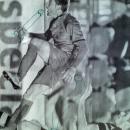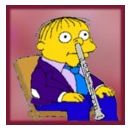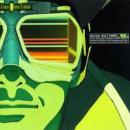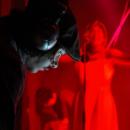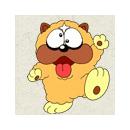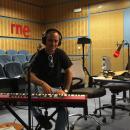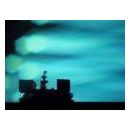Bueno pues aquí intentando programar ya con el firmware UNO y la verdad es que de entrada es un follón. Con el firmware seguía una serie de pasos que me permitían asignar funciones a pedales, pero ahora me aparecen una serie de pasos intermedios que no sé a qué aluden, y los resuelvo como me parece con diferentes resultados. Pediría a alguien que maneje el UNO que me señalara a que se debe. Voy a copiar el proceso que seguía antes, y a intercalar en negrita las alteraciones con respecto a la descripción que da.
1. Select the bank to program by tapping the UP/ENTER or DOWN/ESCAPE pedals. In this example, let’s use Bank 05. Ensure that 05 appears in the numeric display
2. Select the pedal to assign a MIDI CC message to. Let’s use pedal #1 . Pedal #1 ’s red LED should light up
3. Push the DOWN/ESCAPE pedal until the green LED for SWITCH 2 starts flashing (se encienden simultáneamente los pedales 1-2-3-4-5. Presupongo que tengo que elegir uno y apago todos menos el seleccionado inicialmente. Vuelvo a apretar UP tal y como dice en el paso 4).
4. Push UP/ENTER to confirm that you want to edit pedal #1
5. Now, you’ll notice that pedals #1 , #8 , and #9 all have their LED’s activated. This means that pedal #1 has these MIDI functions already assigned to it. It is necessary to disable these MIDI functions before programming the FCB1010 to work properly with Live. So, to turn them off you must HOLD THE PEDAL DOWN UNTIL THE RED LED TURNS OFF. Do this for pedals #1 , #8 , and #9 . Pedal #1 – which you’re editing – now has NO CC#’s or MIDI notes assigned to it. (No aparecen encendidos los pedales 1, 8 y 9 sino sólo el 8 y el 9. Los apago de un solo click, sin necesidad de mantener pisado el pedal. Selecciono un número cualquiera, el 6. Hago ENTER/UP y ahora sí aparecen los pedales 1, 8 y 9. Los apago)
6. Next, you have to assign a MIDI CC to pedal #1 . Do this by holding down pedal #6 labelled CNT 1. Pedal #6 ’s LED should light up and stay on.
7. Push down pedal #6 so that its LED starts flashing.
8. Push UP/ENTER to confirm that you want to change the value for CNT 1. (Hago todo el proceso hasta aquí, pero antes de darme opción de cambiar los valores, me da opción de cambiar el number. Le asigno por ejemplo el 26 y doy a UP/ENTER).
9. A number should start flashing in the numeric display above the UP/ENTER pedal. This shows the current CC# number that pedal #1 is assigned to. For use with Live, this needs to be assigned to an undefined CC# which are CC#’s 22-31, and 84-90. For this example, let’s use CC#22, so enter this either by pressing the #2 pedal twice, or by using the Expression Controller A.
10. The numeric display should now read 22 and it should not be flashing. Press UP/ENTER to confirm this selection
11. Next, the numeric display should be flashing with a value. This is the velocity setting, which for our purposes you should set to 127 in the same manner described in step 9
12. The numeric display should now read 127 and it should not be flashing. Press UP/ENTER to confirm this selection. The LED for pedal #6 should stop flashing and remain lit.
13. The next step is to save the new settings. To do this, hold the DOWN/ESCAPE pedal until the Bank number appears in the numeric display, which in this case, should be 05. The LED for pedal #1 should remain lit.
14. The quickest way to confirm that the setting has been saved is to assign pedal #1 to a parameter in Live. So, assuming that you’ve already got Live open and your FCB1010 is connected, click on Live’s MIDI button in the top right hand corner.
15. Select a parameter to which you’d like to assign Pedal #1 . In this example, let’s assign it to the record arm button of audio channel #1 .
16. Press down on pedal #1 . The number x/22 should appear on the record arm button where x represents the MIDI channel the data on which the FCB is transmitting on, most likely it’ll be channel 1, 2, or 3. Of main concern is that the number 22 – this is the CC number you’ve just programmed into pedal #1 on the FCB1010.
En fin a ver si alguien sabe aclararme el sentido de estas variaciones, gracias.

Seguimos con probaturas. Digamos que desactivando todos los pedales y por lo tanto saltándome los pasos, llego a programar según la lista de pasos sin mayor problema. Vuelvo a tener un pedal a mi disposición para controlar el looper, y también con el UNO vuelve a darme este problema de cambiar rápidamente de modo naranja a amarillo (play) cuando intento regrabar. Entro en modo de configuración general, desactivo el tap tempo y lo mismo, con lo que supongo que no es ése el problema. Estoy perdido... snif

Hola .
si se puede ,yo la tengo y la he usado ,pero tienes que programarla para que los pedales manden mensaje midi de nota,asi podras asignar ese mensaje de nota a cualquier opcion programable del ableton.hay que decir que esta pedalera no esta pensada para ese caso pero con un poco de leer el manual podras cambiar los mensajes midi de la 1010.
espero ayudar.

1
gracias a ambos por las indicaciones, probaré a ver

Yo el fcb lo uso de una forma muy simple, con el midi map de ableton, y de momento me va bien. Asigno un pedal al botón grande de looper que es grabar/play/overdub, es decir, primero graba si no hay nada, le das y solo reproduce y le vuelves a dar y hace overdub.
Para borrar, como había que mantenerlo apretado no sé cuántos segundos, no me iba bien ya que empezaba a reproducir el loop durante esos pocos segundos hasta que lo borraba y ya podías volver a empezar, como al principio. Lo que hice fue asignarle otro pedal al botón de borrar. Con dos pedales por pista yo me apaño, y no la he probado de momento para nada más. Probaré a consciencia lo que dice abundio del play/overdub, pero me da que a mí por suerte me funciona bien. El ordenador es un Mac.

1
#37
te funciona? yo estoy seguro que es eso tío, a mi me paso lo mismo cuando la estrené, animo!

Buenas,
Agradezco mucho a la gente que ha ayudado en este hilo, gracias a vosotr@s soy capaz de hacer funcionar la pedalera con Ableton.
Aun así todavía tengo una duda y es si puedo configurar los pedales de expresion como notas midi.
Un saludo.

Creo que no, aunque seguro que con el max for live se puede hacer algo un poco bizarro


